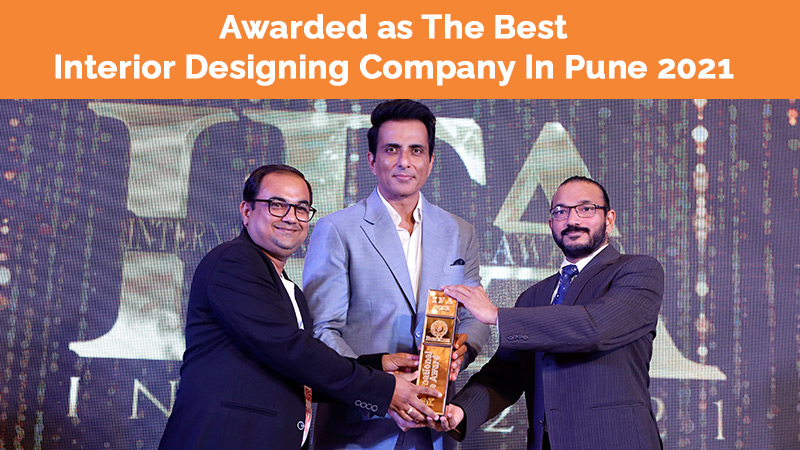
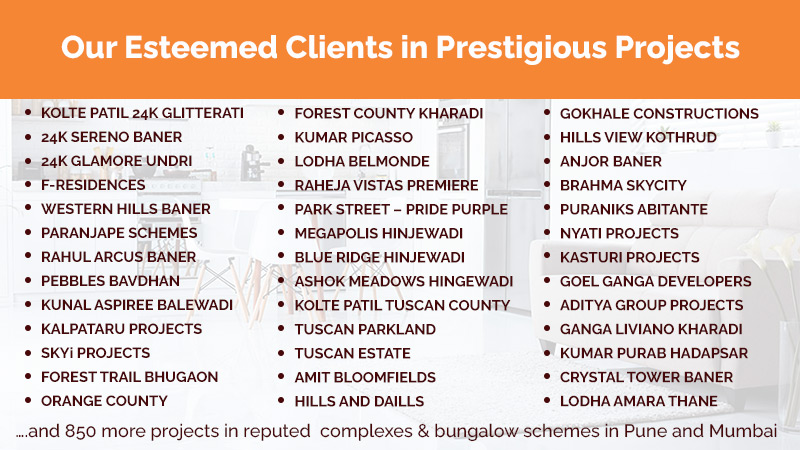
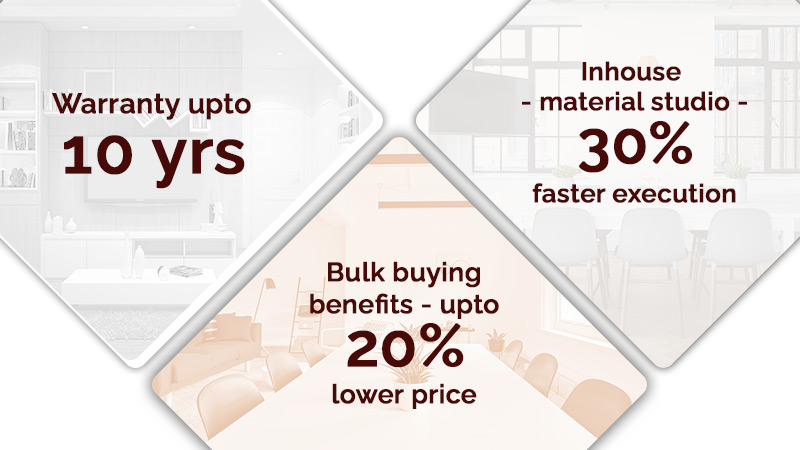
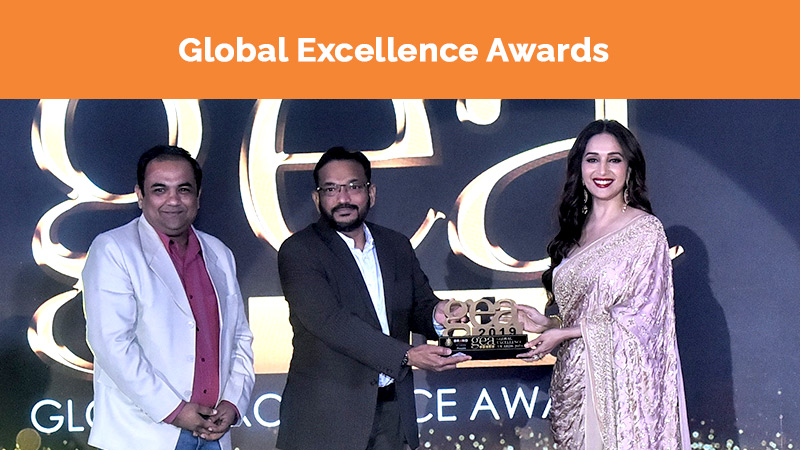
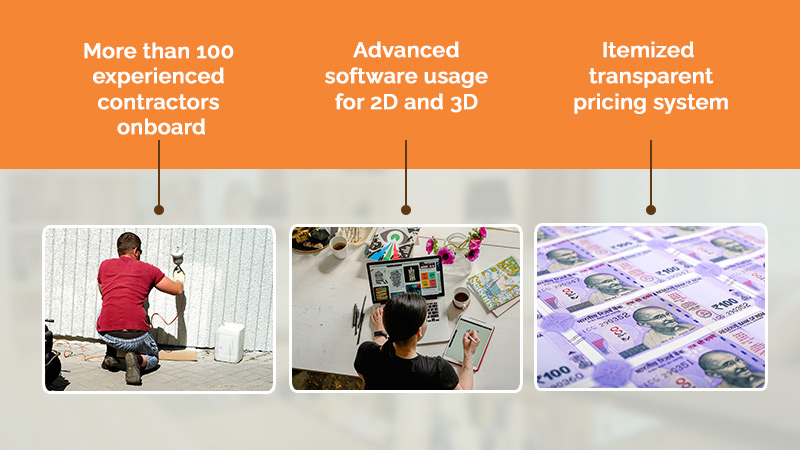
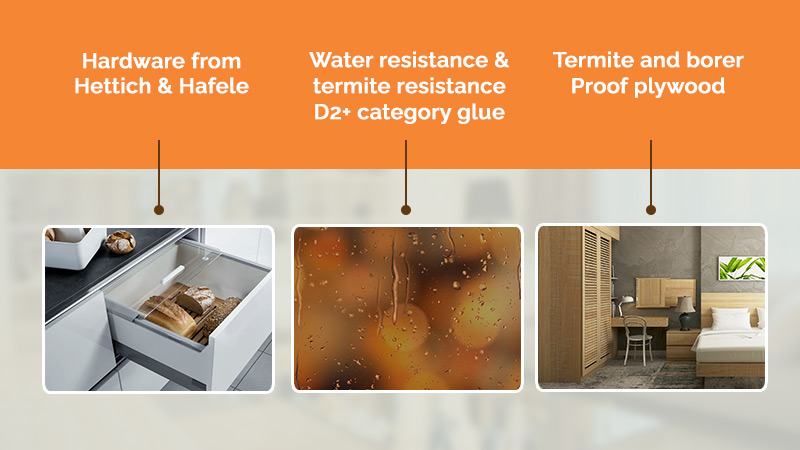
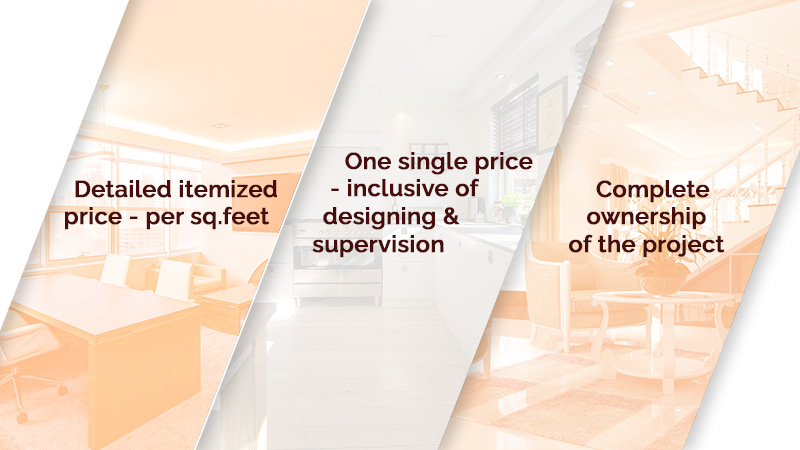



We firmly believe that the foundation of any client / designer relationship is the TRUST. Our ability to maintain trust in any situation has made us successful in this competitive field. Our project approach promotes highly responsible designs, sustainable material and healthy environments. In last 8 years we have executed more than 1500 small and large projects across various cities in India and that has given us the opportunity to resolve thousands of issues in the process and helped us to streamline the execution process drastically. Now we are confident of almost zero error execution.
Experienced project manager is appointed to handle all the project activities monitoring, procurement planning etc. The designer will make regular site visits to co-ordinate process, inspect the quality of workmanship and resolve any on-site issues.
The sequence of activities will normally go like this; dusty work first like false ceiling, electricals, civil changes etc and then prepare site for carpentry works
Before starting execution, almost a week before, our project manager visits the site and understand builder’s or society’s rules and regulations, project manager meets society supervisor to understand working hours, water, electricity, lift availability etc. Project manager even thoroughly checks if there are any existing leakages, stains, damages on faucets, sanitary wares, tiles etc. If there are any door frames issues, sliding windows issues etc. those are reported to owners so that those can get repaired up by builder in a week’s time.
Once the final designs are approved and the execution or implementation phase begins, our team ensures that all contractors understand the plans. We visit your site with contractors to walk them through the design and explain how fixtures, furniture and other items should be placed in each room and mark the furniture layout on flooring and walls. Detailed drawing printouts and 3D views are pasted on the respective walls, we also forward all the detailed drawings (PDFs) to contractors so they can refer back to them as needed.
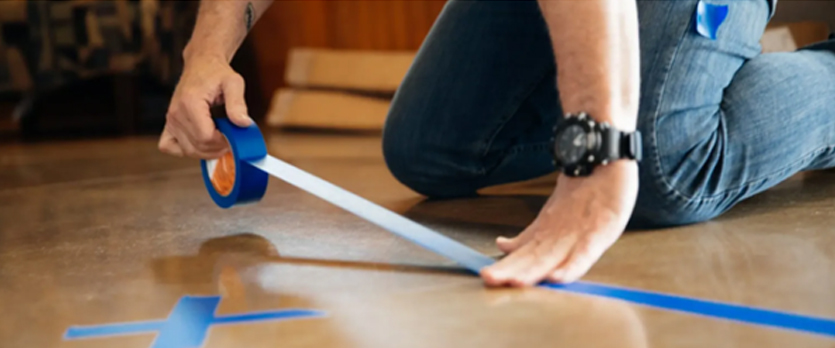
First step for any execution is to lay floor protection sheets, that helps us avoid any damages for your precious floor tiles, marble, wooden floor etc. Floor protector material is available in sheets & roll form and those are laid like a carpet with the help of adhesive tapes.
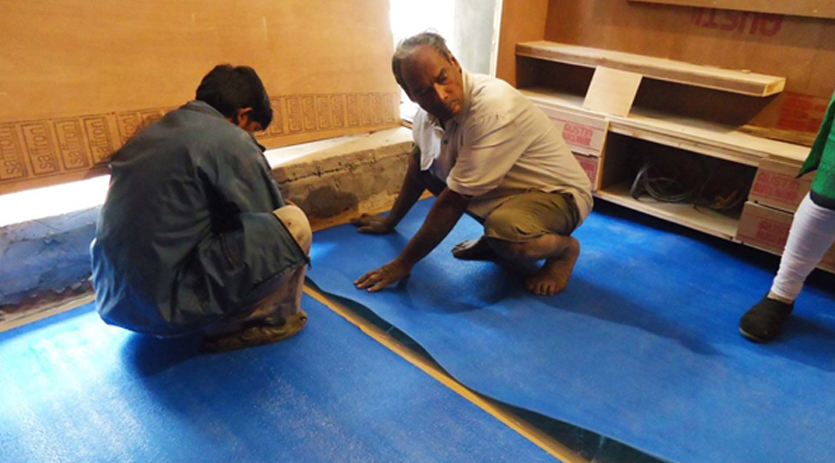
Making false ceiling involves lot of dust, various materials like gypsum board, Shera sheets or bison boards are cut in to several pieces to create false ceiling designs. This board cutting process creates lots of dust onsite, that’s the reason we generally avoid to bring any other expensive material before false ceiling. Marking the ceiling as per designs is the first step then metal channels are fixed and then gypsum board are fitted on these channels, finally it is finished with good quality gypsum and pop powder using joinery nets at the joints to avoid any cracks.
Even electrical work comes under list of dusty jobs, electrical is executed along with false ceiling work, as per electrical drawing new wiring, extension of few existing electrical points, switch board shifting, fan shifting etc jobs are executed in this phase. Even air-conditioning piping, wiring, brackets fixing, outdoor units fixing is finished in this phase itself only.
Civil Work is primarily that work which is fixed to the house and its absolutely immovable, this is one of the highly messier jobs in the interiors, in this phase we finish demolitions, tiling, wall building, plastering, debris clearance.
Carpentry is one of the most important skilled trade and a craft in which the primary work performed is the cutting, shaping of plywood, veneers, laminates, acrylics and installation of furniture components primarily. Natural wood was the traditional raw material for Carpenters and they did the rougher jobs such as framing, but today many other materials are also used like WPC boards, PVD coated strips, glass, mirrors, wainscoting etc. Onsite carpentry as well as modular factory work can be adopted considering the budget and furniture requirement.
Veneer in carpentry parlance refers to a very thin slice of decorative wood with grains. The veneer is put to use by gluing it on to a thin plywood surface in factory, these thin sheets are pasted on wardrobe, storage, panelling to create beautiful designs. You can add veneers for doors, coffee tables, study tables etc.
Once plywood is veneered, the veneered wood sheets are sent for polishing, there are various types of veneer polishing like melamine, PU polish with matt, semi-gloss and glossy finish. There are different types of polishes used to derive desired effect.
Paints are actually the thin coatings applied to mostly wall surfaces in a liquid form. Paint dries and becomes flexible solids. They have many uses, the protection of the surface from sunlight, dampness, dust, abrasion, and weathering. They provide easily cleanable surfaces that help keep the substrates clean and tidy. Wall colours can alter the interior by the use of light or dark shades, matt or glossy surfaces and not to forget with various textures.
As a part of Interiors project, we plan appliances as well, nowadays most of the families go for microwave, oven, hob, chimney, fridge, washing machine, dish washers and air conditioning for their new houses. Mostly, the budget decides the choices of these white goods, we select ACs while planning false ceilings and get those installed along with false ceiling work. Planning of built-in appliances like microwave ovens needs to be done while designing the kitchen, so that box dimensions can be planned accordingly. Other appliances like tv, fridge, washing machines etc are generally fitted in the last week of project after the cleaning is completed.
When it comes to material, linen, silk, faux silk and velvet are the best choices to use for window treatments since they tend to hang the best. Faux silk tends to be the most durable, and in a particularly sunny room, faux silk doesn't deteriorate as quickly as real silk.
Styling can be considered as the last leg of the project, styling is nothing but the right arrangement of artefacts, frames
After styling we plan the formal handover of project, on last couple of days before handover, we invite client on site and show them operations of each and every furniture component, we ask them to operate and check if it works as per expectations, on last day formal handover of all the remotes, lock keys etc will be done with the best wishes. for NRI clients we also support them in getting connections of Dish tv, internet and CCTV.